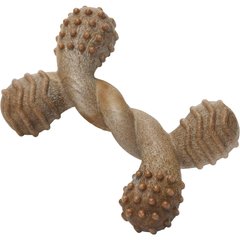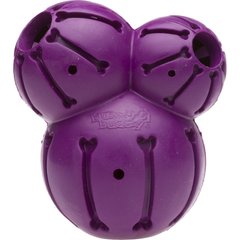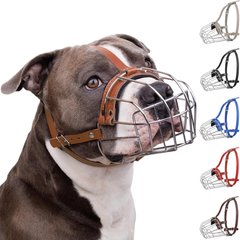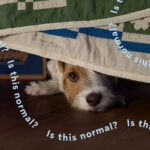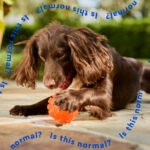Can Dogs Eat Leaves? Why Do Dogs Eat Leaves?
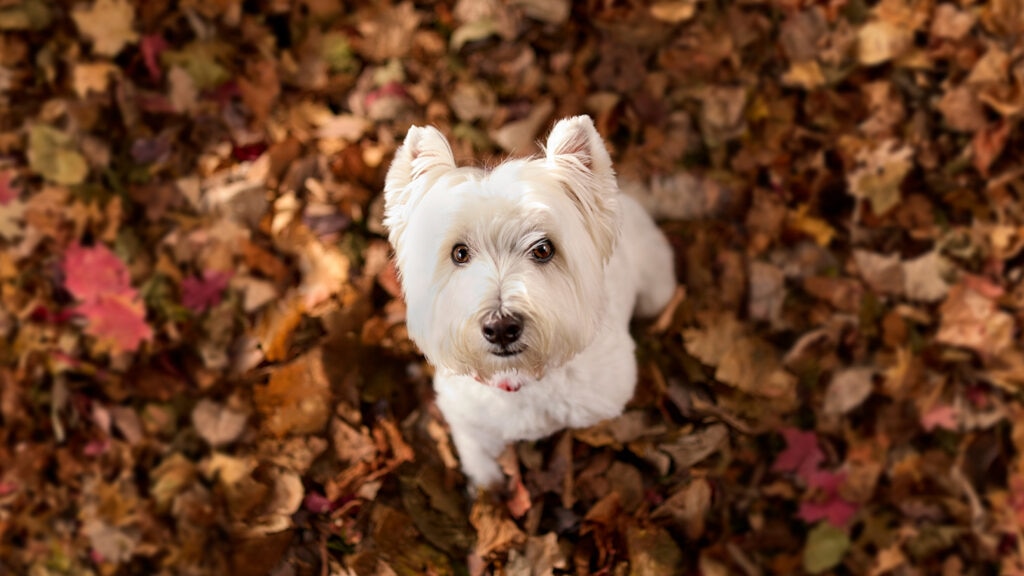
Photo by Chewy
Many dogs treat fallen leaves like nature’s snack bar, happily munching on a pile around the yard or chasing them down on a walk. But while the habit might seem harmless, can dogs eat leaves safely?
Eating a leaf here or there usually isn’t a big deal, but some leaves can be toxic, and eating too many can upset your pup’s stomach. Here’s what you need to know about why dogs eat leaves, the risks to watch out for, and how to curb the behavior if it becomes more than just an occasional nibble.
If you suspect your dog ate a toxic plant, contact your veterinarian or the Pet Poison Helpline at 855-764-7661 immediately.
Key Takeaways
- Dogs might eat leaves out of boredom, curiosity, or to get your attention—but it’s a behavior you shouldn’t encourage.
- Some leaves, like oak, cherry, azalea, oleander, and black walnut, are toxic. Even non-toxic leaves can lead to stomach upset, mold exposure, or intestinal blockages if eaten in large amounts.
- If your dog eats leaves, try to identify the plant, watch for symptoms like vomiting or lethargy, and contact your vet if you suspect toxicity.
Can Dogs Eat Leaves?
Yes and no. Dogs can eat some leaves, but that doesn’t mean they should.
Some common trees (e.g., certain maples) may be nontoxic in small amounts but eating them can still cause problems. Large quantities can lead to gastrointestinal upset, including vomiting, diarrhea, or intestinal blockages if the leaves clump together in the digestive tract, says Sam Varon, DVM, owner of Broadway Veterinary Hospital in Sacramento, California.
The bigger concern is toxicity.
Oak leaves, for example, contain tannins, natural compounds that help trees fight disease. If your dog eats them, it can cause digestive upset or even liver issues, depending on how much they consume, says Marc Smith, DVM, owner of Natchez Trace Veterinary Services in Nashville, Tennessee.
Cherry and peach tree leaves are another risk. They contain cyanogenic glycosides, which can poison pets if ingested, Dr. Smith adds.
Other toxic leaves to avoid include:
- Black walnut
- Oleander
- Azalea
- Rhododendron
The amount needed to cause toxicity depends on the type of tree or shrub, the condition of the leaves (fresh vs. decaying), and your dog’s size and health. Because it varies so much, Dr. Smith recommends treating all unidentified plant material as potentially toxic and to be avoided.
In short: Because it’s hard to know what your dog’s nibbling on during a walk, it’s best not to let them eat leaves at all.
Why Do Dogs Eat Leaves?
Dogs eat leaves for a variety of reasons, most of which are harmless quirks rather than signs of an underlying illness. Common causes include:
- Boredom: Dogs without enough mental or physical stimulation may turn to leaves for entertainment.
- Exploration: Dogs—especially puppies—use their mouths to explore the world, and leaves are an easy target.
- Soothing: Some dogs with digestive upset or nutritional gaps may try to self-medicate by eating grass or leaves to soothe their stomach, says Dr. Varon, who adds that leaves don’t actually help digestion.
- Enjoyment: Sometimes dogs just like the texture and crunch, says Dr. Smith.
- Attention-seeking: Your dog may be eating leaves for attention if doing so gets a big reaction from you, says Dr. Varon.
- Pica: In rare cases, a condition called pica causes dogs to crave eating non-food items, including leaves.
If your pup’s leaf-eating seems compulsive or frequent, it’s worth checking with your vet to rule out any underlying issues.
What Are the Dangers of Fallen Leaves for Dogs?
The dangers of fallen leaves really depend on the type of plant because not all leaves are the same. That said, these are the biggest concerns:
- Toxicity: As mentioned, azalea, black walnut, and oak leaves can be poisonous. The amount needed to cause a problem varies, but for some, even eating a small amount can be dangerous.
- Pesticides, herbicides, and fertilizers: Leaves may be treated with lawn chemicals or fertilizers, which can also be toxic to your dog.
- Mold, bacteria, and parasites: Fallen leaves, especially if they’re dead and rotting, can harbor mold, bacteria, and parasites, all of which can lead to illness. Moldy leaves can cause vomiting, tremors, or even neurological issues in severe cases.
- Blockages: If your dog eats a large quantity of leaves, the material can clump together, leading to intestinal blockages, a serious condition that may require surgery.
My Dog Ate Leaves—What Do I Do?
If your dog managed to sneak a mouthful of leaves, don’t panic. Take the following steps.
1. Identify the Plant
If you know your dog ate leaves from a potentially toxic tree or shrub, call your veterinarian immediately. If you’re not sure, you can also call the Pet Poison Helpline at 855-764-7661 for advice on next steps.
2. Watch for Symptoms
Signs of trouble include:
If your dog becomes lethargic or starts having tremors or persistent vomiting, Dr. Smith recommends going to the emergency vet immediately. Never make your pet vomit unless instructed by a veterinarian or the Pet Poison Helpline.
3. Seek Veterinary Care
If your dog shows any of the signs above or you’re concerned that they ate a toxic plant, visit your vet for treatment.
Dr. Varon recommends bringing a sample or photo of the leaves to help your vet identify the plant. The treatment approach will depend on the type and amount of leaves consumed.
Your vet may start by inducing vomiting if ingestion was recent, then follow up with activated charcoal to limit toxin absorption. In more serious cases, hospitalization with IV fluids, anti-nausea medications, and supportive care may be necessary until your pup stabilizes.
How Do I Prevent My Dog from Eating Leaves?
If your dog has turned leaf-eating into a habit, here are some things you can do to help:
- Redirect with toys. Provide engaging chew toys, like the Frisco Twist Bone, or treat-dispensing toys, like the Busy Buddy Treat Dispenser, to satisfy their need to chew.
Recommended Products
- Keep them busy. More exercise and enrichment can help reduce boredom-driven snacking.
- Teach them to “leave it.” Dr. Smith says teaching a “leave it” command can be beneficial if you’re able to catch your dog in the act.
- Maintain your yard. Rake up and dispose of fallen leaves as soon as you can, especially if you have toxic plants nearby.
- Consider bitter sprays. Use a pet-safe deterrent spray, like TropiClean Chew Stop, on plants or leaves in your yard.
Recommended Product
- Ask your vet about muzzles. For dogs with chronic pica, a breathable basket muzzle (used only under guidance from your vet) can be a helpful tool.
Recommended Product
FAQs About Dogs Eating Leaves
Are fallen leaves toxic to dogs?
Some are. While many are harmless, shrubs and trees like azalea, oleander, and oak can be toxic. Even if a plant isn’t toxic, it may be sprayed with pesticides, herbicides, or fertilizers that are. Because of this, it’s best to keep your dog from eating fallen leaves.
Is it OK if my dog eats sticks?
No. Sticks can splinter, causing mouth injuries, choking hazards, or intestinal blockages that may need surgery, says Dr. Smith. Some can also be toxic.
Why do dogs eat sticks?
For the same reasons they eat leaves: boredom, curiosity, teething, or pica. If your dog is eating sticks, try to redirect their attention with a chew toy.
